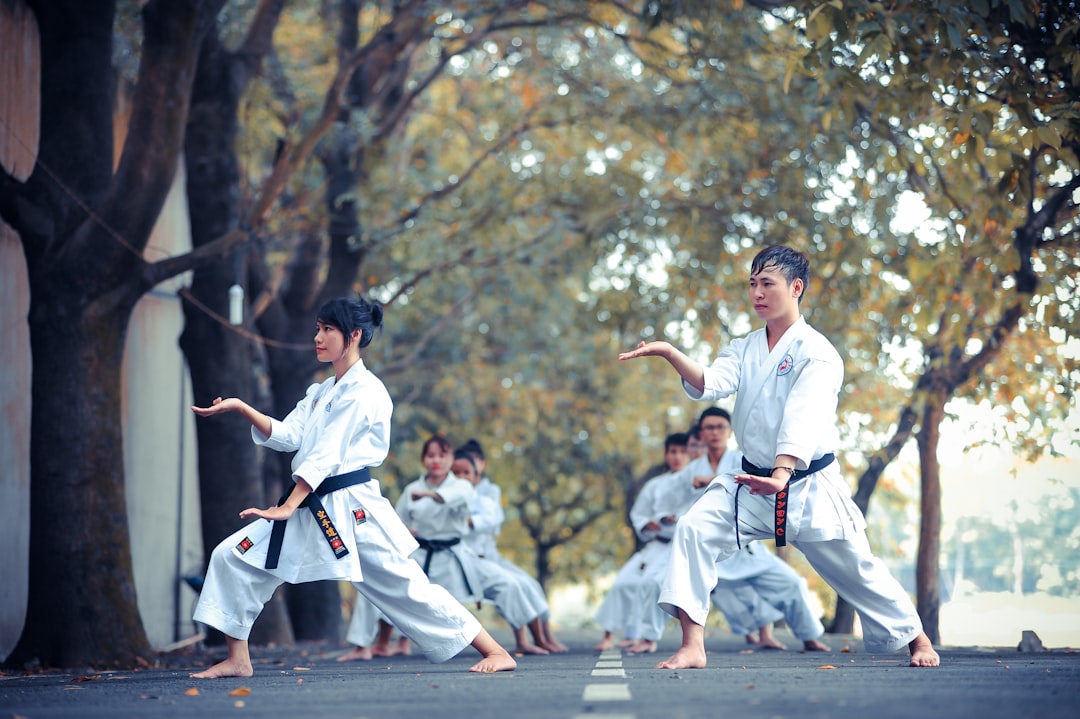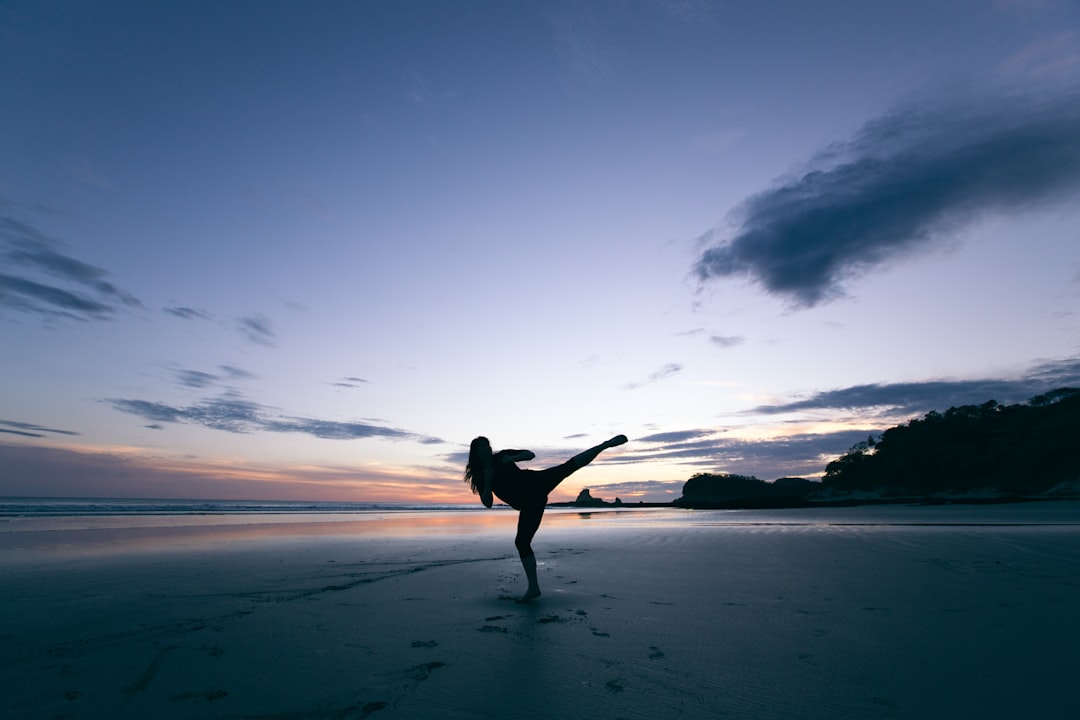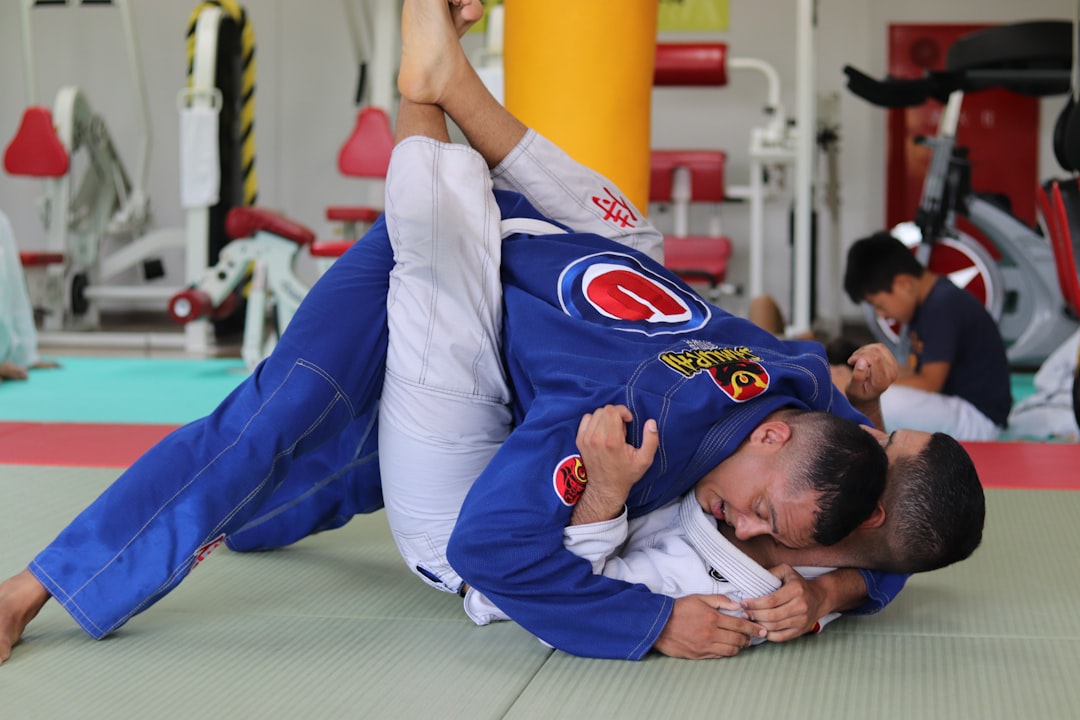The traditional karate attire, known as the keikogi or karate gi, is a culturally significant part of karate practice, symbolizing purity and humility with its predominantly white color. It consists of a durable cotton or hemp jacket (uwagi) and trousers (nastsu), secured with an obi belt, and can include a hakama for higher ranks. The design of the gi is intentionally practical for mobility during training, with straight-cut pants and a longer jacket. While the white gi is a universal symbol in karate, variations exist to represent different dojos or schools. Practitioners wearing their gi demonstrate respect for tradition and connect with a global community of martial artists. Selecting a high-quality, appropriately fitting gi that balances durability and flexibility is crucial for comfort and range of motion during training. It's important to choose a gi that complies with your dojo or competition rules, ensuring it meets the standards of your karate federation to avoid disqualification. The right gi respects karate's formality while providing functionality necessary for optimal performance in this disciplined martial art.
When stepping onto the mat for a karate practice, the attire one wears is not merely a uniform but a symbol of tradition and respect. This article delves into the essence of a karate practitioner’s garb, known as the keikogi or ‘karate outfit.’ We explore its significance in the context of martial arts, the role it plays in practice, and the hallmarks of an authentic and functional gi. Whether you’re new to the art or a seasoned practitioner seeking to upgrade your attire, understanding what brings excellence to a karate gi is key. Join us as we navigate the intricacies of selecting your ideal karate outfit, ensuring you embody the essence of this storied discipline.
- Understanding the Traditional Karate Outfit: The Keikogi
- The Role of the Gi in Karate Practice: Comfort and Respect
- Key Features of a Quality Karate Gi: Fabric, Fit, and Functionality
- Bringing It All Together: Tips for Selecting Your Perfect Karate Outfit
Understanding the Traditional Karate Outfit: The Keikogi

When delving into the world of karate, one of the first aspects practitioners encounter is the traditional attire known as the keikogi, or karate gi. This garment, with its specific design and symbolism, is emblematic of the discipline’s rich history and culture. The keikogi typically consists of a jacket and trousers made from heavy cotton or hemp fabric, featuring a belt known as an obi that ties at the back to secure the ensemble. It’s common to see the keikogi paired with a casual kimono-style jacket, the robe worn over it called a hakama for more formal occasions or by higher-ranking practitioners. Are the pants and jacket of the keikogi designed differently? The pants, or nastsu, are straight-legged and fall just above the ankle, while the jacket, or uwagi, is cut longer to allow for ample movement during practice. Bringing a keikogi for karate practice isn’t just about tradition; it’s about honoring the discipline’s origins and preparing oneself for the rigors of training.
The color of the keikogi can vary, with white being the most common, symbolizing purity and humility, which are key virtues in martial arts. Additionally, different colors may be worn to represent different dojos or schools, but regardless of the hue, the keikogi remains a universal uniform that brings karate practitioners together under a shared identity. When you bring a keikogi for karate training, you’re not only adhering to a tradition but also participating in a global community of martial artists who respect and uphold these timeless practices.
The Role of the Gi in Karate Practice: Comfort and Respect

When participating in karate practice, the gi – a traditional martial arts uniform – plays a pivotal role, serving as both a functional and symbolic garment. Known colloquially as “karate gis,” these outfits are designed to facilitate movement during practice, allowing practitioners to perform techniques with ease and comfort. Are the gi’s primary functions solely related to comfort, or do they extend beyond this aspect? The gi is much more than just a comfortable garment; it also embodies the principles of respect and discipline inherent in karate. It is a uniform that every practitioner wears, promoting unity and equality among students and instructors alike. The white color of the gi represents purity and humility, reinforcing the martial art’s emphasis on self-improvement and self-control. When you “bring your gi to karate,” you are not just preparing for a workout; you are also embracing the cultural and ethical dimensions of this ancient discipline.
Key Features of a Quality Karate Gi: Fabric, Fit, and Functionality

When selecting a karate gi, also known as a keikogi, it’s crucial to consider the fabric’s quality and weave, as these factors contribute significantly to the garment’s durability and comfort during practice. A high-quality cotton, such as the traditional and preferred ryukyu or canvas weave, not only brings resilience but also allows for a natural range of motion, which is essential for executing various karate techniques. The fabric should be neither too thin nor overly thick; it must strike a balance between flexibility and robustness to withstand the rigors of training while still allowing the wearer to move freely.
The fit of the gi is another key feature that can impact both performance and comfort. A well-fitted karate gi should not be too tight or too loose; it should enable the practitioner to perform kata and kumite without restriction. The sleeves and trouser length should be appropriate, neither dragging on the ground nor excessively short. Additionally, functionality is paramount, as the design should facilitate ease of movement for every karateka, regardless of their belt level or body type. Features like reinforced knees and pre-hemmed hems can also enhance the gi’s longevity, ensuring it brings value over time.
Bringing It All Together: Tips for Selecting Your Perfect Karate Outfit

When selecting your perfect karate outfit, it’s crucial to consider the type of karate you practice and the requirements of your dojo or competition rules. Bringing the right attire not only showcases respect for the discipline but also ensures comfort and freedom of movement during practice or competition. Firstly, opt for a gi that aligns with the traditional martial arts aesthetic, such as a karate gi, which typically features a lightweight cotton fabric. Are the sleeves and pant legs the appropriate length for your chosen style? Ensure the jacket’s sleeve length extends to just above the wrist, and the pants should be hemmed to reach just below the ankle for traditional Shotokan or Wado-ryu styles, or consider a shorter length if practicing Goju-ryu or Shorin-ryu.
Secondly, the fit of your gi is paramount; it should be snug yet allow you to move without restriction. Does the outfit accommodate your body type while providing mobility? A well-fitted karate uniform should not be overly tight or baggy. Additionally, consider the color and material that best suit the environment where you’ll be practicing. Is the fabric breathable for intense training sessions? Lightweight materials are ideal for maintaining comfort during vigorous exercises. Lastly, ensure that your outfit complies with the specifications of your karate federation or competition rules to avoid disqualification. Remember, the perfect karate outfit is one that balances formality with functionality and adheres to the guidelines set forth by your martial arts discipline.
In conclusion, a karate outfit, commonly known as a keikogi or gi, is more than mere attire; it is a traditional symbol of respect and unity within the martial arts community. A quality gi ensures both the practitioner’s comfort during rigorous training and adherence to the traditions that karate upholds. When selecting your perfect karate outfit, consider the fabric for its durability and breathability, the fit for optimal movement, and the functionality that supports the techniques you will practice. Whether you are just beginning your martade (journey) in karate or are an experienced practitioner, the right gi brings forth the respect for tradition while allowing you to perform at your best. Remember, the right outfit can make all the difference in your karate practice.
